Do you ever have one of those weeks that stand out as good eating weeks? Last weekend was one of those for me. Between meeting friends for dinner and spending time with my family I feasted for two days. Actually, I’m still feasting from a care package that my parents sent home with me, including a huge basket of homegrown vegetables from their garden.
Our friends served blistered shishito peppers with wine before visiting a new-to-me restaurant, Pathos, in Oakland. Because I already have a favorite Bay Area Greek restaurant, I was pleasantly surprised by the quality of the food we had Saturday night. From the perfectly grilled octopus, endive salad and beet salad to the grilled sea bass, Pathos won me over. Then the bougatsa came out, eliminating any doubt about a second visit.
Bougatsa is a Greek pastry made with semolina custard wrapped in buttery, crispy phyllo. The exterior had the perfect delicate crispness, hitting the right balance with the smooth custard interior that was not too sweet. Dipping the bougatsa in blueberry compote made the last bites of the meal even tastier. My friends were amused (but not surprised) at my declaration that I’d be adding bougatsa to my recreate-at-home list.
The next day was even better. My parents hosted a family get-together which meant lots of family favorites and dishes showcasing their homegrown bounty. My parents were both blessed with green thumbs and stepping out on their large, perfectly manicured backyard is envy-inducing for an occasional, and not-always-successful gardener like me. With deer in our yard my husband and I stick to cacti and succulents–and even those fare better under her care. My husband and I were amazed at some specimens that look nothing like what we have at home when my mom started out with clippings from my pots!
As for the food, my parents served three different kinds of fresh salsas and salads with the bulk of the ingredients plucked from their garden. My contribution was dessert and I was happy to see that my Cherry Almond cake garnered as much attention as the pretty cheesecake I bought for the get-together.
One of the highlights of the weekend was these scones. I mentioned in my last post how enamored I’ve been with spelt flour and one of the first recipes I experimented with was scones. I’m particular about them having a slightly crisp, slightly sturdy texture and I especially don’t like them too doughy or too soft.
I will admit that out of all the white flour recipes I’ve converted to spelt (pasta, tarts, cookies, bread, empanadas), scones have been the most challenging to get right. Whole spelt flour doesn’t lend to much lift in baked goods. I’ve seen and tasted only one perfect spelt-based scone. A local bread company sells out of their spelt scones each week at my neighborhood farmers market. It took me three weeks of visits (and a long line) to finally get my hands on their scones. They were perfect (according to my standards) but I was disappointed to discover that the main ingredient the company uses is white spelt flour (the whole spelt flour is further down the ingredient list). White spelt flour has been refined and while it responds better to baking techniques, much of the nutritional content I’m after has been removed from it.
(I might add that there’s nothing at all wrong with white spelt flour or white all-purpose flour. I still use the latter at home but I’m quite enjoying this mission I’ve embarked on to spelt-ify some of my favorite recipes. And scones happen to be my biggest challenge so far.)
While these 100% whole spelt scones lacked the lift and perfect texture I’m after, they were a success just the same. These scones were light in texture, a little crumbly and slightly crisp outside. My initial disappointment was drowned out by praises from my husband and our friends who tried them. I learned they didn’t share my preference for a sturdier (but not dry) scone. They liked the light quality of this version just fine.
I admit that it didn’t take very many bites before they started to grow on me, too. Spelt flour lends a nutty, sweet quality to baked goods and in this case that went well with the savory notes from the ham, cheese and chives. They paired just as well with a pot of tea as with the bottle of rosé and shishito peppers that our friends served when toasted slightly. I was even more pleased to receive a call from our friend, Tom, during our drive home when he shared that they enjoyed the last of the scones I brought for them when they arrived home.
Maybe it’s time to revisit my ideas about the perfect (for me) scone…or maybe I’ll just keep experimenting until I come up with the perfect recipe. Until then, I wouldn’t mind hanging on to this one.
(If you decide to make these scones using all-purpose flour, stick to two cups of flour and reduce the baking powder to two teaspoons.)

Ham, Cheese and Chive (Whole Grain) Scones
Ingredients
- ¾ cup plus 1 tablespoon cold heavy cream or half-n-half
- 1 large egg
- 2 cups + 1/4 cup whole spelt flour you can use all-purpose if you prefer it
- 1 tablespoon + 1 1/2 teaspoons baking powder
- ½ teaspoon kosher salt
- 6 tablespoons 3/4 stick cold, unsalted butter, in small cubes
- 3/4 cup cooked diced ham
- 2/3 cup cheese diced small or shredded (I used a combination cheddar, gouda, fontina)
- 1/4 cup scallions
Instructions
-
Preheat your oven to 400°F. In a medium bowl, whisk together the ¾ cup cream and egg and set aside. In a larger bowl, whisk together the 2 cups of flour, baking powder and salt. Using a pastry blender, cut the butter into the flour mixture until the mixture resembles coarse meal, with few small pieces of butter remaining. Stir in the ham, cheese and chives. Stir in the cream mixture with a fork until just combined. Do not overwork the dough; it should be crumbly. If the dough looks too wet, add half (1/8) of the remaining 1/4 cup flour.
-
Transfer the dough to a lightly-floured work surface and pat the dough into a roughly 8 x 8 inch square (and about 1 inch thick). You can cut them into rounds or wedges, too. Cut into 12 squares and transfer to a parchment-lined baking sheet. Bake for 16-18 minutes (or until golden), rotating the sheet halfway through baking time.
Recipe Notes
Feel free to use all-purpose flour for this recipe. Stick to two cups of flour and reduce the baking powder to two teaspoons.
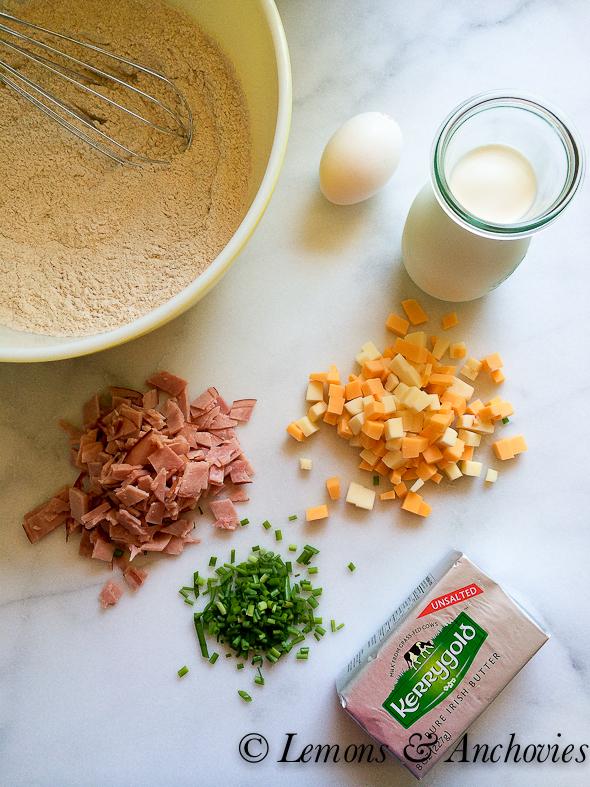
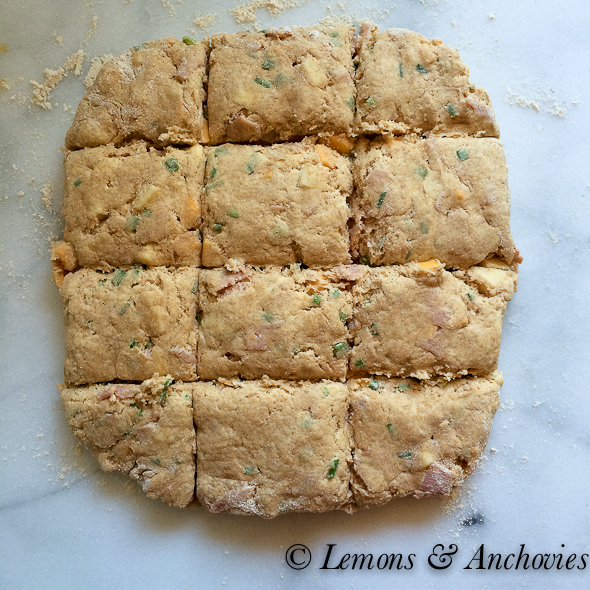

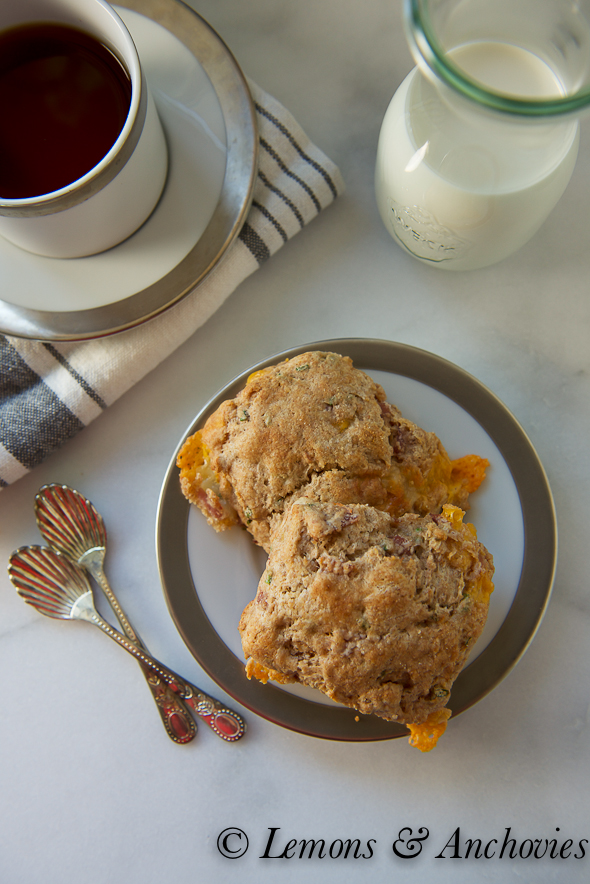
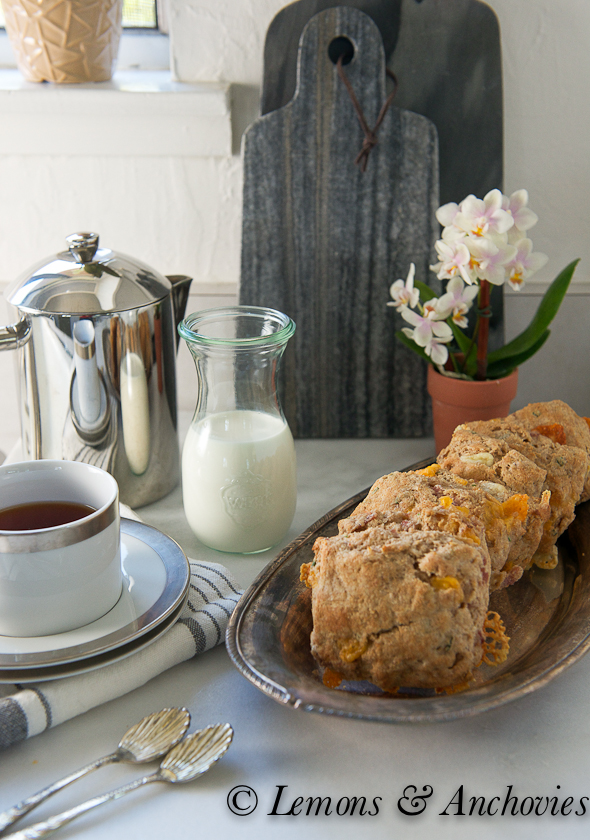
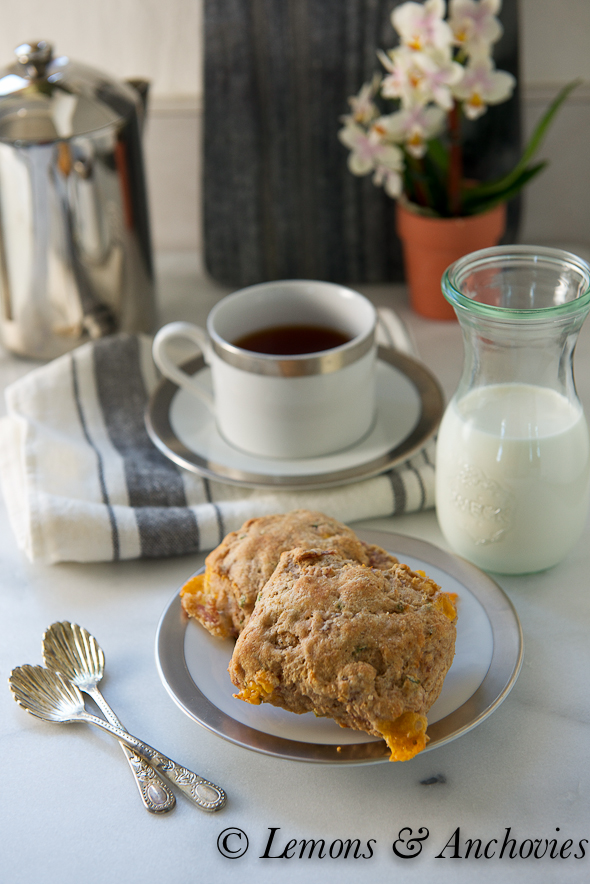






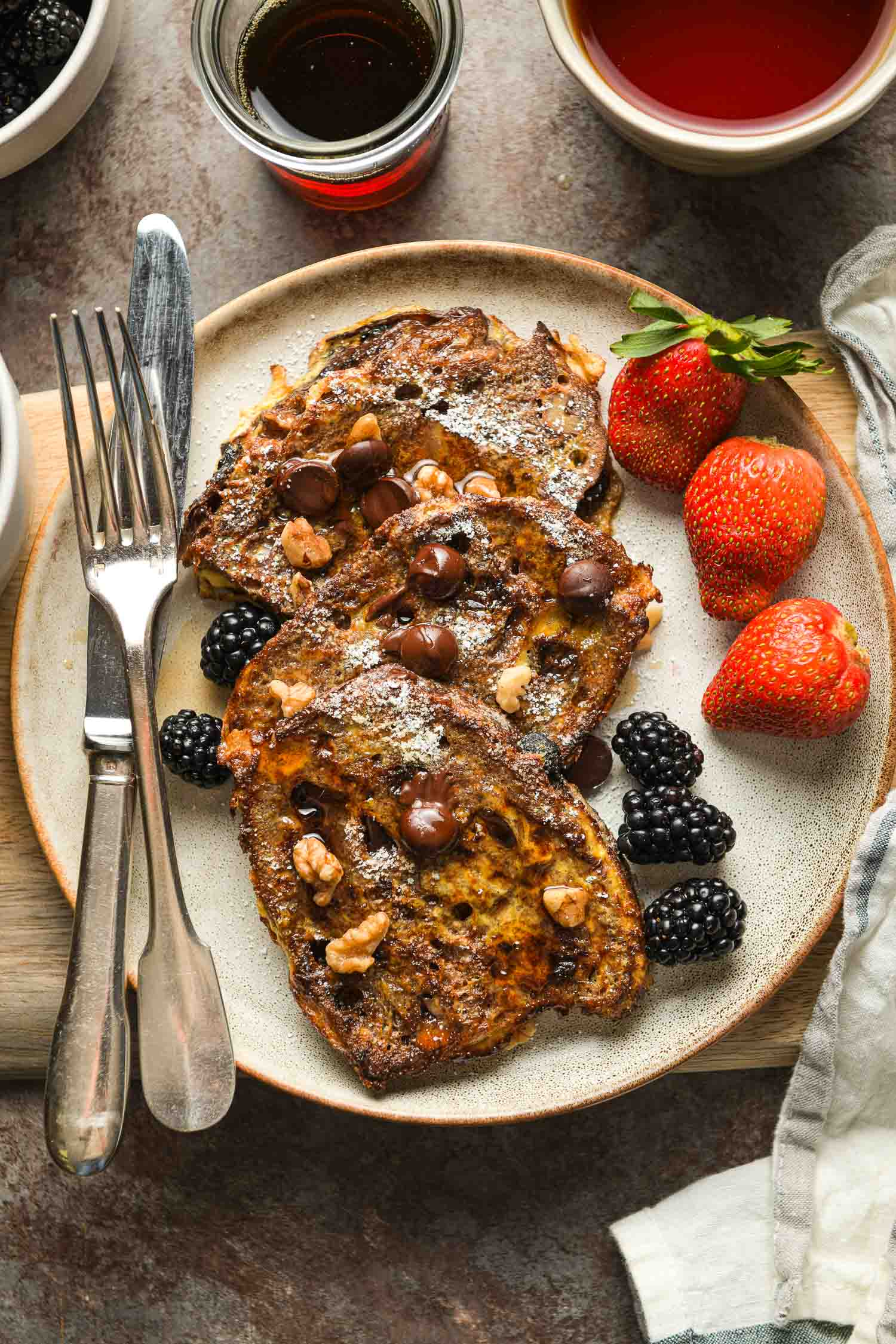
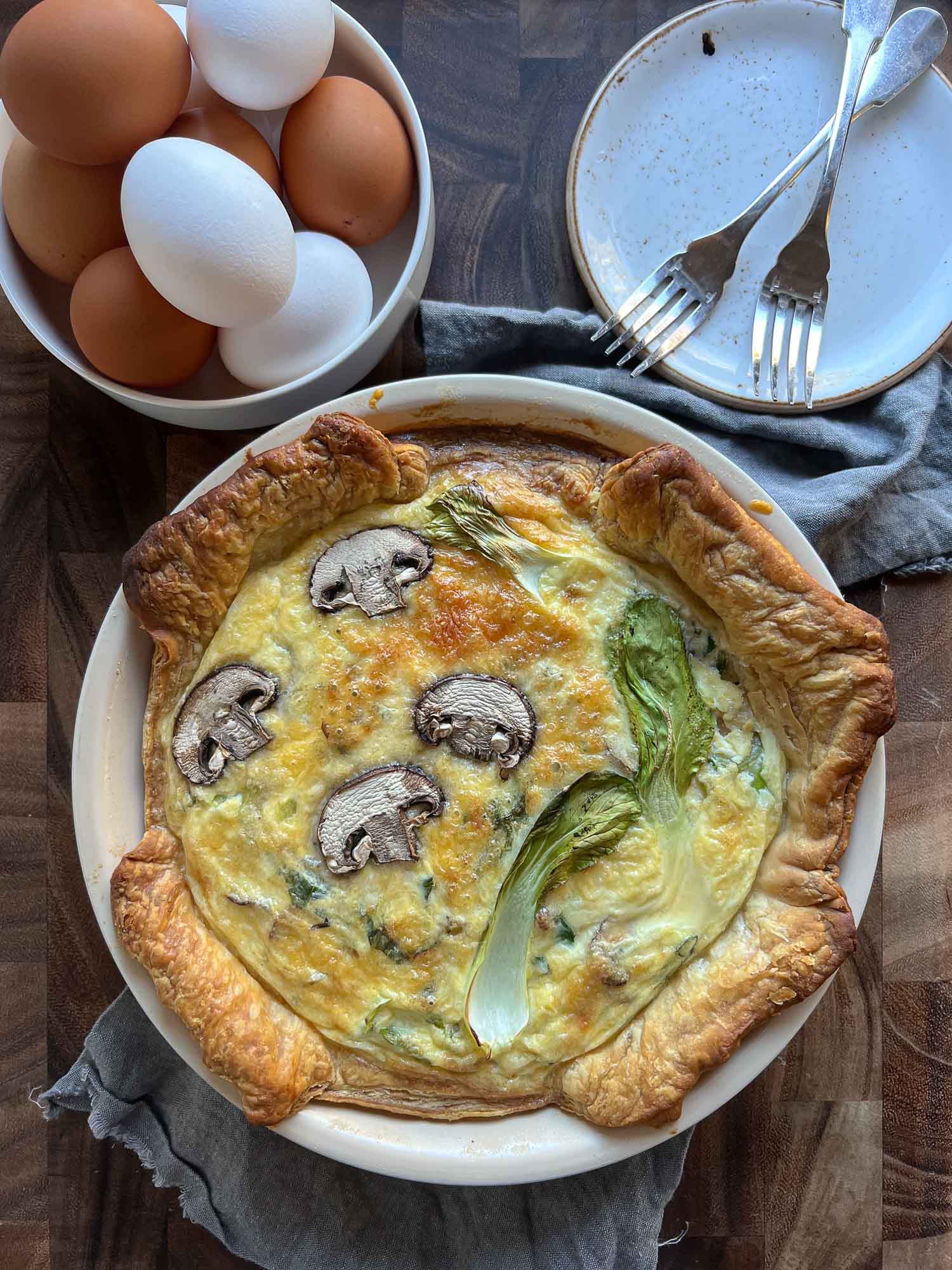


Mouthwatering! Your scones look fabulous and must taste really good. A great combination of ingredients.
Cheers,
Rosa
Oh Jean! These scones are singing to me. Love, love a savory scone. I have to check out this splet flour . Hope your weekend is going well!
I haven’t tried baking with spelt flour but now I’m tempted – what wonderful savory scones!
These looks great!! Would soy milk work instead of the cream? Possibly at a lesser quantity?
Erica, I’ve never used nondairy milk for baking so I’m not sure what results you would get. I did Google nondairy scones and there seem to be a few recipes out there so it just might work. Good luck! Let me know if you try it and what results you get. 🙂
yum.. these look seriously delicious. never had a savoury scone before! definitely something i need to trial in my kitchen. love it!
I feel the need to spelt-ify a few baked goods too (white flour is all fluff and little substance). These scones look lovely! Savoury scones are high on my to-bake list.